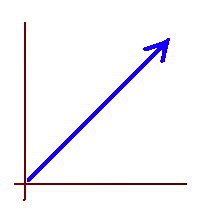Where are they?
In my math tutor practice I constantly answer questions. I usually get a lot of questions from my students. All kinds of math related questions. Some of them are very common, meaning, I get them all the time. For example, Calculus and Pre-Calculus students very often ask: “What is the domain?” “How do I find the domain of a function?” The vast majority of standardized test takers ask questions to the effect of “Why do I have to re-learn all this math stuff?” “When am I ever going to use it?” Sometimes I get questions that make me laugh, like: “How can you stand so much math? My head hurts!” and “Do you also have a real job? Or, is this all you do?”
Recently a student asked me a couple questions I found just fascinating. We were going over some algebra rules. I started giving her some numerical examples to illustrate one of the rules. All of a sudden my student asked: “Why are there so many numbers? Where are they?” These are great questions! They get to the root of the concept of number. Just think about these questions for a moment. “Where are they?” Where are the numbers? It is almost like asking: “Where do numbers come from?” or even “How can I believe numbers really exist? Can I see them?” It is clear numbers are not physical objects but we use them to count physical objects all the time. You believe in the existence of something concrete, like cars, because you can easily see them (often in big numbers), but what about numbers themselves? Do we ever get to see a number? What we usually call numbers, like street addresses, or numbers in license plates, or ID cards, or page numbers in a book, all those are not actually numbers but numerals, the symbols we use to represent numbers. Numbers are in our mind. They are concepts, ideas, thoughts, more than things. My answer to these questions was along the following lines:
Numbers are everywhere. We do not see the numbers but we put numbers on the things we see. Numbers show up as soon as you are able to tell differences and similarities. Think about counting the chairs in this coffee shop, for example. When you count the chairs you do not count the tables, or the bookcases, only the chairs. So you count them because they are equal, they are all chairs. However, you do not keep pointing your finger at the same chair while going 1, 2, 3,.. You count that chair and immediately you go on to the next chair for the next number. So you count them with different numbers because they are all different chairs. What makes counting possible is our ability to identify a set of objects that are all equal, in a sense, yet different, in another sense. So we can “see” numbers when we look at the stars, at the grains of sand in a beach, or the cars in a highway, and so on. As long as our mind sees the world in terms of “equal” and “different,” numbers will be there, everywhere.





No comments:
Post a Comment